Dental hygiene is very important for your dog’s health. If your dog has smelly breath or any signs that they are suffering from poor dental hygiene, you should take them to a vet. In most cases your dog’s teeth can be professionally cleaned and your dog can recover from this illness. However, there are times that teeth may need to be removed. Luckily solving the problem of bad dog teeth and poor dental hygiene is relatively simple. However, it does require a few simple steps to be followed.
The days of simply putting some food out for your pet are long gone. Now our companion animals are a part of the family, and that means they need the same level of care you’d give to any members of the family. As dogs lack the ability to hold a toothbrush, we’ll need to do it for them! In this article we’ll cover some of the causes for poor dental hygiene. What can be done to prevent bad dog teeth, including how to spot plaque on dog teeth.
What makes bad dog teeth?
Have you ever noticed that wild animals don’t seem to suffer from dental disease? This often leads to the question; of why do domestic animals have this issue? Are we treating them badly? Well, the answer is no, we’re not doing anything wrong. Wild animals will clean their teeth by gnawing on bones. This is quite effective at cleaning your dog’s teeth. But the biggest reason that wild animals don’t seem as affected by tooth decay is that they do not live long enough for it to become a problem. A wolf in the wild will live 8-12 years, and a domesticated dog will often live double that thanks to modern food and genetics.
The types of food you give your dog can affect the hygiene of their teeth. If you feed a wet food diet, these tend to stick to the teeth, and can become places for the bacteria to live and cause problems. While a dry food is better than wet, because it has no hard pieces, it can still be quite sticky and cause similar issues. A raw food diet is the best food to provide your dog with. It properly mimics what they’d find in the wild. It still does not provide any mechanical cleaning of their teeth, and it can be time consuming to feed. Out of all the foods available, we’d suggest going with the highest quality dry food you can buy.
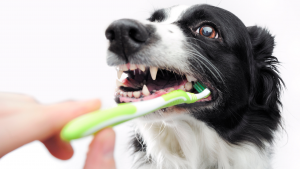
What to do about rotten dog teeth?
Dog’s teeth should appear white, and not smell. If your dog has any brown discolourations on their teeth, or their breath has a bad smell, then they’re probably having some issues with their teeth. It’s teeth could be rotting and painful. It’s important to note that the majority of dogs will have some sort of issues with their teeth, but, with good care you can make it better over time. To get a good indication of the level of tooth decay, or to check for any rotten dog teeth, you should take them to the vet. Your vet will check over their teeth, and give you a gradient score of their condition. They’ll give you a few suggestions on how best to fix the problem. This may include a professional clean. In bad cases, an extraction.
Methods of cleaning dogs teeth
In regards to dental hygiene in dogs, prevention is always better than cure (and cheaper!). There are a few different methods for cleaning your dog’s teeth.
All of these methods are excellent for lowering the chances your dog will suffer from any dental conditions. For the best results it’s best if you choose at least 2-3 methods, we’d suggest using natural treats, such as deer antlers or goat horn, water additives, and a good quality toothbrush & toothpaste. However, even if you only use one method it is much better than doing nothing!
Brushes & Toothpaste – using a toothbrush and animal specific toothpaste, clean their teeth as you would your own. Don’t use human toothpaste, as the ingredients are not good for dogs.
Water Additives – you can buy special additives to go in their water and this can help soften plaque on dog teeth.
Dental Chew Toys – get some dental dog toys and allow your dog to chew it.
Raw Bones, Antlers, Goat Horn – for a natural cleaning these will scrape the sides of their teeth while they chew it. Try to avoid ‘smoked bones’ as these can splinter and cause intestinal issues.
Dental Dog Treats – these are specially made treats that are designed to brush your dog’s teeth. These are soft and fibrous. They are designed to last long enough to scrape the sides of their teeth as your dog chews them.
Using Dental Specific Foods – many major dog food brands will offer dental food. These are large biscuits that take some time to break down and will assist in scraping any excess food particles from their teeth.
Tartar and plaque on dog teeth
Plaque is a huge problem for the health of your dog’s teeth. It’s been reported that approximately 85% of dogs over the age of three years will have some form of dental disease. If you’re not doing anything about this, it can quickly develop into a much larger problem. The best way to avoid it is to add some teeth cleaning methods into your daily routine.
Plaque occurs on your dog’s teeth when food particles come into contact with saliva. If it is not removed regularly, this can combine with mineral deposits, become hard and turn into tartar. It then causes tooth decay and other issues. Once plaque becomes tartar. It usually requires a vet to properly clean it from your dog’s teeth. Ideally you want to remove plaque before it gets to this stage. With a few simple tooth brushing techniques, coupled with appropriate foods, toys, and bones, you can help your dog remove most of the plaque causing tartar before it becomes a problem
How often should you brush your dog’s teeth?
If you’re thinking of brushing your dog’s teeth, it is better to start when they are young so they can get used to the way it feels. Teeth brushing should only take a few minutes and provided you’re using a good ‘doggy’ flavoured paste, they may even enjoy it! For the brushing of your dog’s teeth you can follow these steps:
Use a dog toothbrush and moisten the bristles. Give your dog a small portion of the toothpaste. They will get used to the flavour. Lift the dog’s lips, and proceed to gently brush the outside of their teeth. Use gentle circular motions, and brush their teeth and gums. Make sure you brush all of their teeth including the back molars. If your dog is compliant you can brush the insides and tops of the teeth. Most dogs do not like this so don’t push the issue. Rather stick to what your dog will allow you to do. Reward your dog with either a treat, play time, or a walk. This will help reinforce the idea that a toothbrushing means that something good is about to happen!
How often should I brush my dog’s teeth?
It’s best to brush your dog’s teeth often, ideally at least once per day. If you can add it into your daily routine, you’ll find that it does not take that long to do. In between brushes you can use a good quality tooth spray or gel as these will help break down the tartar and plaque on their teeth making it easier to remove.
If you’re not sure about the appropriate methods for cleaning their teeth, you can consult with your local vet. They can demonstrate the appropriate methods for teeth cleaning and give you some good advice. Even with good home tooth brushing, it may be an excellent idea to have your dog’s teeth professionally cleaned at least once per year.
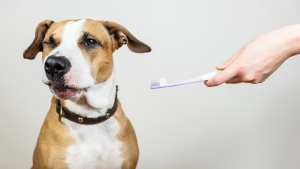

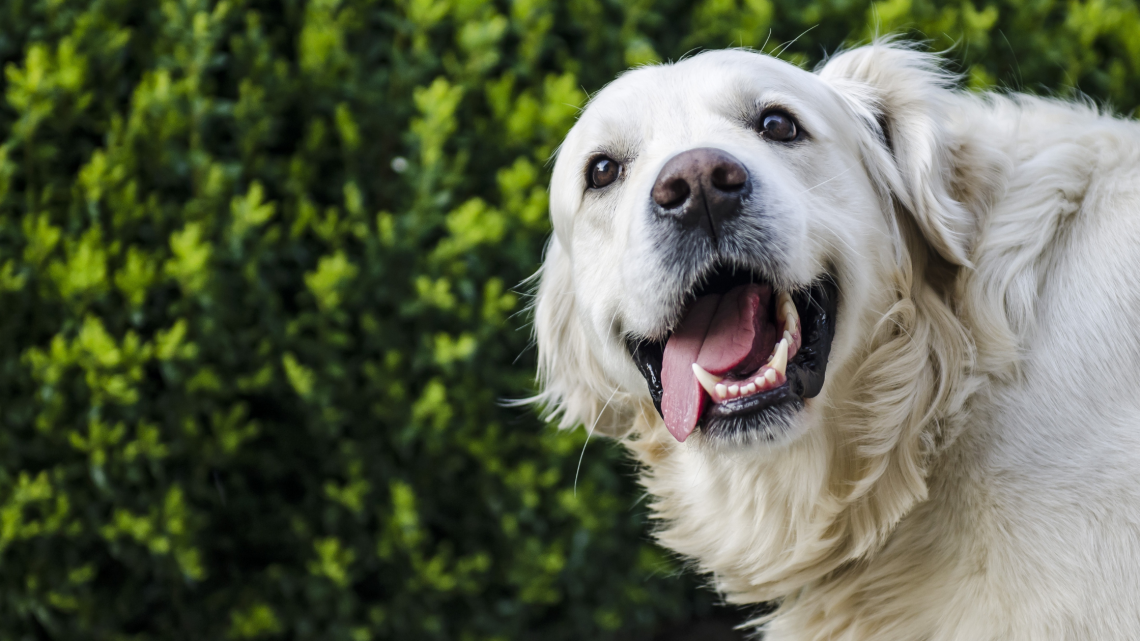
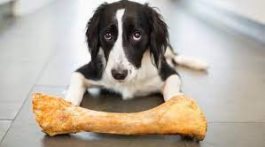
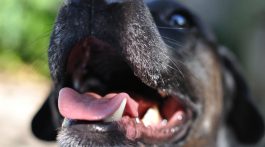
No Comment